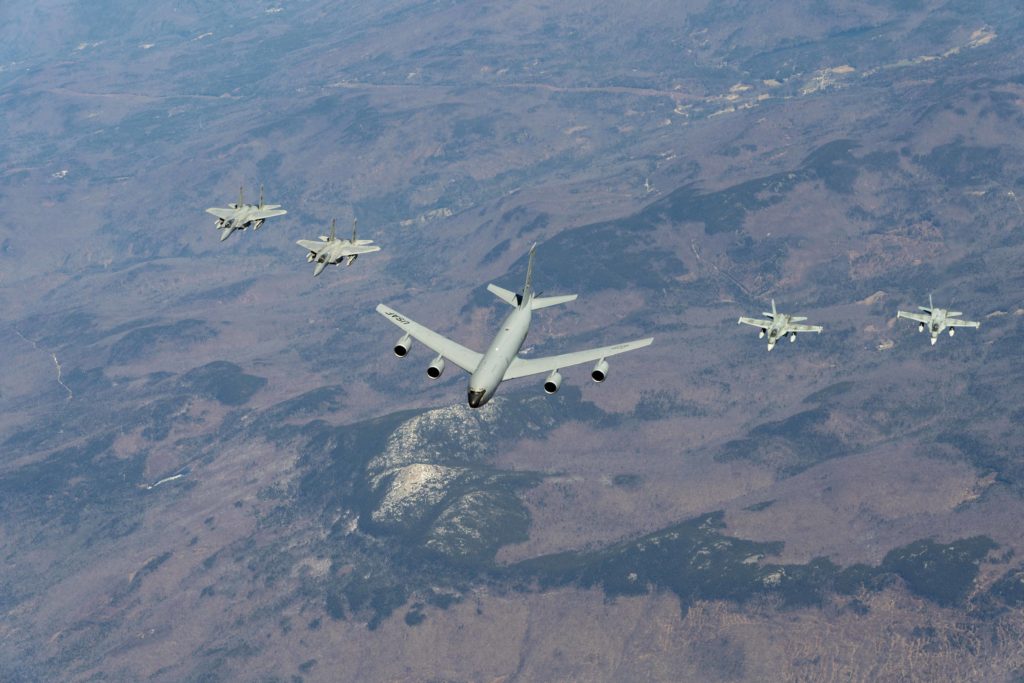Estimated reading time 4 minutes, 51 seconds.
If you looked into the skies above Toronto on the morning of Monday, Apr. 27, you may have caught a glimpse of CF-188 Hornets flashing by overhead.

Though the air traffic into Toronto Pearson International Airport and Billy Bishop Toronto City Airport is far less than usual, the fighter jets were conducting a North American Aerospace Defense Command (NORAD) training exercise, practising response procedures in high-density airspace.
NORAD would not provide details on the scope of the exercise or the operational fighter squadron or number of aircraft involved. But it did emphasize that the training was not related in any way to the federal government’s response to the coronavirus.
“As a matter of operational security, we do not discuss where our fighter aircraft deploy from to support our [mission],” said a spokesperson. “We don’t speak to numbers of aircraft participating in an exercise or operation since it speaks to our tactics, techniques and procedures to execute our mission.”
The NORAD quick reaction alert (QRA) response is among the Royal Canadian Air Force’s (RCAF’s) most important missions. Highly classified, its primary role is early warning and air control, often highlighted by intercepts of Russian bombers and fighters on the edge of North American airspace. On March 9, CF-188s and U.S. Air Force F-22 Raptors intercepted two Russian Tu-142s north of Alaska.
Since Sept. 11, 2001, it also includes Operation Noble Eagle, the tracking and identification of all aircraft entering North American airspace and the intercept of civilian airliners not responding to air traffic control.
Responsibility for “Q” duty is alternated among the Air Force’s four operational fighter squadrons from various locations across Canada, including their main operating bases at 4 Wing Cold Lake, Alta., and 3 Wing Bagotville, Que.
While details of the Apr. 27 training were scarce, NORAD did share more about a Continental U.S. (CONR) and Canadian (CANR) Regions air defence exercise conducted on Apr. 23 across the U.S.-Canada border.

CF-188 Hornets from 3 Wing Bagotville and F-15 Eagles from the 104th Fighter Wing, an Air National Guard unit in Westfield, Mass., practised handoff procedures while executing intercept operations of KC-135 Stratotankers from the 101st Air Refueling Wing in Bangor, Maine, and the 171st Air Refueling Wing in Pittsburgh, Pa.
According to NORAD, the KC-135s “simulated suspicious flights, known as a track-of-interest that crossed from Canadian to U.S. airspace.” The Stratotankers also provided air-to-air refueling for the Hornets and Eagles.
“The aerospace defence of Canada and the United States is assured even during the COVID-19 crisis,” said MGen Derek Joyce, the Canadian deputy commander of NORAD. “Our militaries are prepared to take on multiple challenges including defending the skies while simultaneously being in support of a global effort to fight the pandemic.”
“The 104th Fighter Wing works regularly with the [RCAF] during real-world and training missions,” said Col David Halasikun, commander, 104th Fighter Wing Mission Support Group. “Our interoperability has proven seamless throughout the years. The skills and professionalism of their controllers and pilots make them excellent partners as we defend the skies of North America. Especially during these trying times, we stand together, ready to protect our countries and defend our citizens.”
In a statement, the bi-national command noted that exercise personnel from both the NORAD Continental and Canadian Regions were taking “all safety measures,” including proper hygiene and wearing protective gear when appropriate, to “protect service members to ensure zero risk to the NORAD mission.”








